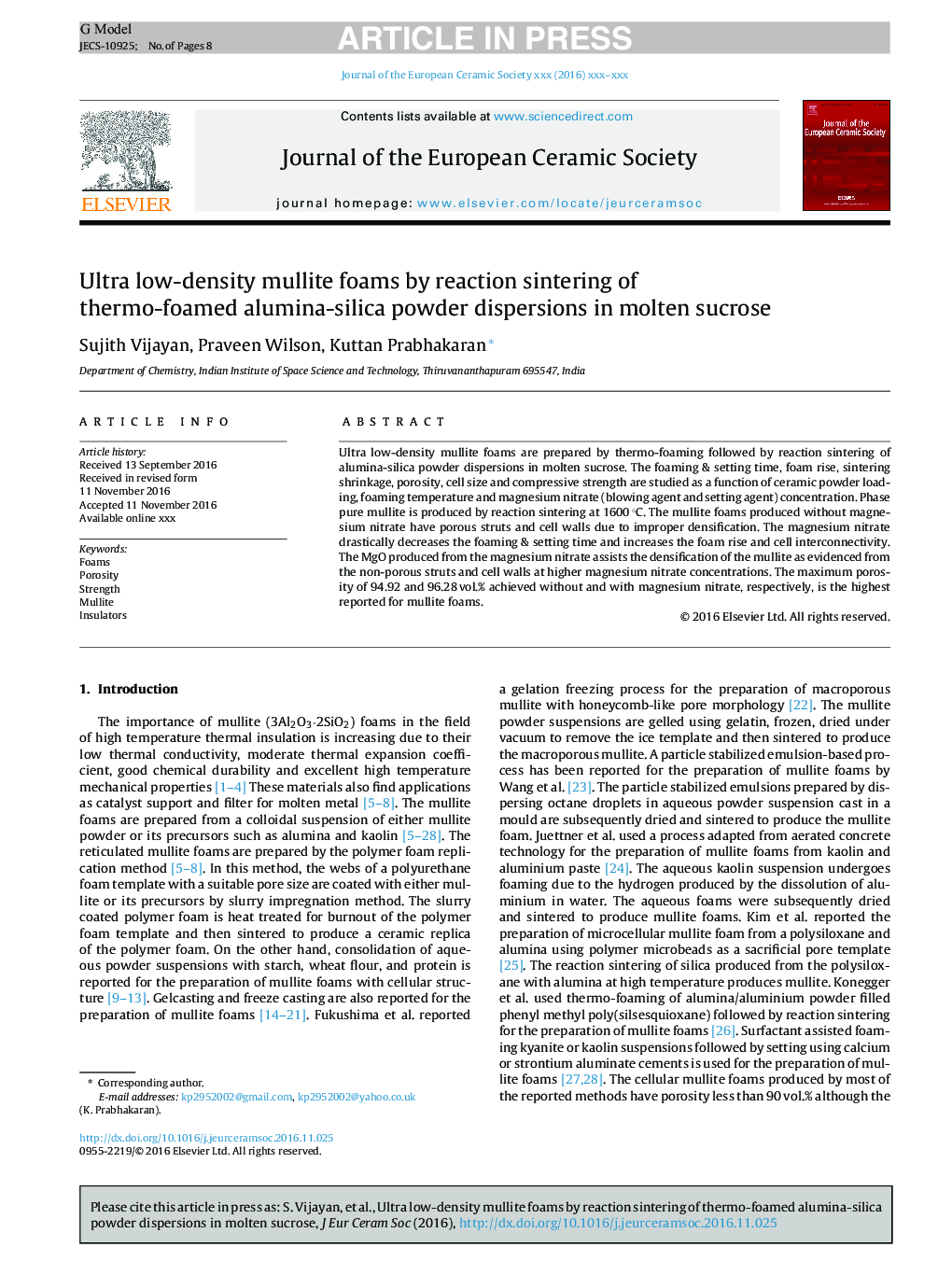| Article ID | Journal | Published Year | Pages | File Type |
|---|---|---|---|---|
| 5440694 | Journal of the European Ceramic Society | 2017 | 8 Pages |
Abstract
Ultra low-density mullite foams are prepared by thermo-foaming followed by reaction sintering of alumina-silica powder dispersions in molten sucrose. The foaming & setting time, foam rise, sintering shrinkage, porosity, cell size and compressive strength are studied as a function of ceramic powder loading, foaming temperature and magnesium nitrate (blowing agent and setting agent) concentration. Phase pure mullite is produced by reaction sintering at 1600 °C. The mullite foams produced without magnesium nitrate have porous struts and cell walls due to improper densification. The magnesium nitrate drastically decreases the foaming & setting time and increases the foam rise and cell interconnectivity. The MgO produced from the magnesium nitrate assists the densification of the mullite as evidenced from the non-porous struts and cell walls at higher magnesium nitrate concentrations. The maximum porosity of 94.92 and 96.28 vol.% achieved without and with magnesium nitrate, respectively, is the highest reported for mullite foams.
Related Topics
Physical Sciences and Engineering
Materials Science
Ceramics and Composites
Authors
Sujith Vijayan, Praveen Wilson, Kuttan Prabhakaran,
